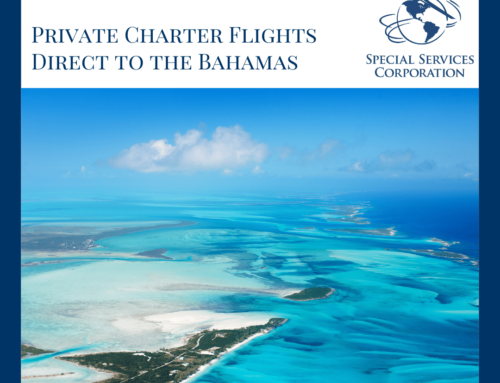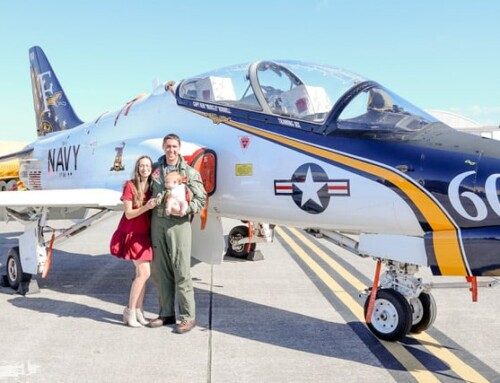There are various forms of aircraft ownership. Although full aircraft ownership provides the greatest flexibility to a company and/or individual, if under-utilized, full ownership can be the most costly choice. Full aircraft ownership allows full control over every aspect of the capital investment, operation, liability, and cost (safety, security, schedule, maintenance, personnel, liability, and regulation compliance).
Most owners of complex aircraft choose to employ a full-time flight department or a professional aviation management company to run the day-to-day aircraft operations.
Owners of smaller aircraft often choose to manage the aircraft themselves. Although, a management company could provide significant benefits to these smaller operations in providing discounts on pilot services, insurance, fuel, hangar, and maintenance, in addition to the administrative managed aspect.
Other factors to consider with aircraft ownership are taxes/depreciation, utilization, capital investment, and full aircraft operation management. Aircraft ownership may provide tax depreciation advantages to those that qualify.
Choosing the right aircraft to fit your flight mission profile is a whole separate topic due to the many factors considered in making the aircraft type decision. This is why it is extremely important to choose the right professional aviation management company. The complete management company will provide valuable guidance in this important process.
Aircraft Full & Co-ownership
Full aircraft ownership means that an individual or a company owns 100% of the aircraft. Again, this level of ownership provides the greatest amount of flexibility and places all the control into your hands. Operations are managed either through an in-house flight department, a professional aviation management company, or by you the owner.
The utilization analysis helps determine whether full ownership is the right option. Aircraft under-utilization greatly increases the cost of using and owning an aircraft. As a rule of thumb, aircraft utilization should be between 200 – 300 flight hours per year to justify full ownership. That being said, some may justify full ownership at lower utilization simply due to the flexibility needed for the operation.
Sharing aircraft ownership with other individuals or companies in an effort to spread out expenses and increase utilization is another option. This is known as aircraft co-ownership. Each co-owner is responsible to provide a crew and pay for their share of the expense. Co-ownership also reduces the amount of capital investment. There is no Federal Excise Tax (FET) as long as the owners maintain possession, command, and control of the aircraft. While the individual expenses are reduced under co-ownership, the level of schedule flexibility may also be reduced proportionately to the number of co-owners.
Although the owners maintain control over the aircraft, most elect to delegate the day-to-day management of aircraft operations to a professional aviation management company. This eliminates the need to have flight crews and other aviation personnel on the owner’s payroll. The liability and regulation compliance responsibility is also shared with the management company.
Both full and co-ownership of an aircraft may elect to place the aircraft on charter (discussed later) as an option to increase utilization by producing revenue to help offset ownership cost.
Under a co-ownership arrangement, owners are not able to charge each other for usage of the airplane. This can be done on a limited basis through a joint ownership agreement which we will discuss next.
Aircraft Joint Ownership
Aircraft joint ownership is when two or more companies jointly own and operate an aircraft under mutual agreements.
Under a joint ownership arrangement, one of the registered owners may provide the flight crew on their payroll, and each joint owner pay a portion of the expenses detailed in the agreement. This is further defined in 14 CFR 91.501(c) (3) of the Federal Aviation Regulations (FAR). In other words, each owner pays their own direct operating costs but may share certain fixed or indirect ownership costs as allowed in the agreement.
Direct costs are defined as the expenses associated when the aircraft is operating. Fixed or indirect costs are defined as the expenses associated whether the aircraft is operating or not operating.
All joint owner names must be listed on the registration certificate. To be eligible for joint ownership, the aircraft must meet certain criteria. It must be U.S. registered and qualify to operate under FAR Part 91 Subpart F, and:
- Have a maximum takeoff weight of over 12,500 pounds, or;
- Be a multi-engine turbojet aircraft, or;
- Be a fractional program aircraft.
Other aircraft and helicopters may share certain costs if they are operated under the National Business Aircraft Association (NBAA) Small Aircraft Exemption. The exemption is issued and governed by the NBAA for NBAA members. Several options could apply here, including an interchange agreement or a timeshare agreement, both of which are discussed later.
Properly organized joint ownership agreements are considered non-commercial travel and not subject to Federal Excise Tax (FET).
Although joint ownership lowers each owner’s capital investment, likewise allowed tax depreciation is lowered proportionately to the owned share.
Aircraft Fractional Ownership
Aircraft fractional ownership is when multiple owners, typically eight, own an equal share of the aircraft, and is operated under Federal Aviation Regulations (FAR), Subpart K Fractional Ownership Operations through an agreement with a fractional management provider. The arrangement generally requires a dry-lease exchange (without crew) documented by the written program management agreement. The support and crew management services are provided under a management service agreement. Familiar operators that have been successful with these programs include names like Net Jets, Citation Air, and Flight Options to name a few.
These arrangements allow an individual or company to purchase and own a fraction share of an aircraft, usually no less than a 16th share. The fraction size of the aircraft share purchased represents a fixed number of flight hours per year. The purchase of a 16th share may represent anywhere from 50-100 flight hours depending on the aircraft fractional program sold.
The program agreement is structured to allow the other owners of the aircraft, as well as other aircraft owners in the entire fractional program the joint use of the aircraft. Ownership is a fraction share of a certain aircraft within the fraction program fleet, although you may seldom or never actually travel on that particular aircraft.
Access is guaranteed specific to that type of aircraft. Cost generally consists of the upfront aircraft share purchase, a monthly management fee, and a set rate per flight hour used when occupying the airplane.
The affiliated program manager acts as the management company and arranges or provides the flight crews, crew training, maintenance, and all other administrative services regarding the lease agreements.
At the end of the contract term, typically five years, the program management agreement provisions allow the owner to either sell the aircraft share or renew the service agreement for another term.
Generally there is a four to eight hour advanced schedule notice before an aircraft may be available. However, more than one aircraft may be available at one time not to exceed the fractional share utilization contractual agreement.
Aircraft fractional ownership appeals to users because it allows the purchase of a specific amount of aircraft ownership and contract flight operation management needed. However, the purchase price and cost per flight hour may be significantly higher than other ownership or charter options.
Tax depreciation benefits may apply to the specific aircraft share owned when qualified accordingly.
Aircraft Interchange Agreements
Aircraft full ownership, co-ownership, shared ownership and fractional ownership each have their unique place in the organization of non-commercial aircraft operations. These operations and agreements are governed by Federal Aviation Regulations Part 91, particularly when operating large and turbojet powered multi-engine aircraft.
Interchange Agreements allow two owners of two different aircraft to exchange the use of their respective aircraft. This type of agreement falls under 14 CFR Federal Aviation Regulation Part 91.501 (c) (2). The exchange must be made on a flight hour to flight hour valued basis. However, when the aircraft are different in type that may cause an operation cost difference, the additional cost may be charged under Federal Aviation Administration (FAA) limited compensation criterion.
Leases under an interchange agreement are also subject to Federal Aviation Regulation Part 91.23 “truth-in-leasing” clause requirement provision in an aircraft lease.
Each company or owner may exchange equal aircraft flight time. For example, company A may use company B’s aircraft for 2 flight hours in exchange for company B’s using company A’s aircraft for 2 flight hours. No fees are charged or made, except in an amount not to exceed the difference in operating cost of aircraft type owned.
As was the case with joint ownership, only U.S. registered aircraft that can operate under FAR Part 91 Subpart F may use an interchange agreement. The aircraft must also:
- Have a maximum takeoff weight over 12,500 pounds, or;
- Be a multi-engine turbojet aircraft, or;
- Be in a fractional program.
This type of arrangement may be beneficial when an aircraft is in for maintenance or otherwise unavailable. Access to another aircraft also helps maintain travel schedules with uninterrupted productivity.
Aircraft Time Sharing Agreements
Time sharing is defined in general under Federal Aviation Regulation Part 91.501 (c) (1). An aircraft owner may lease their aircraft with flight crew to another person or group for a limited charge.
A time sharing agreement allows aircraft owners to wet lease their aircraft. A wet lease is when an aircraft owner leases the aircraft with a flight crew for a limited cost reimbursement allowed under Federal Aviation Regulation Part 91.501 (d). Some of the expenses that may be reimbursed under a wet lease are:
- Fuel, oil, lubricants, and other additives,
- Crew travel expenses,
- Hangar & tie-down away from base operations,
- Insurance if obtained for the specific flight,
- Airport landing fees, taxes, etc.,
- Customs, foreign permit fees, etc.,
- Flight catering,
- Passenger ground transportation,
- Flight planning and weather services,
- And an additional charge equal to 100% of the fuel, oil, lubricants, etc…
Only U.S. registered aircraft may operate under a time sharing agreement. Other aircraft requirements are:
- A maximum takeoff weight of over 12,500 pounds, or;
- Be a multi-engine turbojet aircraft, or;
- Be in a fractional program.
Although this type of agreement is considered a non-commercial operation by the Federal Aviation Administration, the Internal Revenue Service views time sharing as commercial operations and are subject to the Federal Excise Tax (FET), which is currently at a 7.5% tax rate.
Aircraft Full, Co or Joint Ownership Arrangements with Charter Sub-Leases
The option aircraft owners have in the past either overlooked or at least under-valued is considering aircraft charter opportunities. Though the variables are many, some of the advantages may be:
- Revenue producing to off-set expenses,
- Charter utilization could serve as the co-owner shared expense partner,
- Increase aircraft utilization during the down-turned economy or demand.
In today’s economy, many more operators are looking for ways to generate income with an aircraft. Aircraft values have dropped considerably in most markets. Those looking to buy are finding favorable opportunities, and those looking to sell, are realizing that they cannot afford to sell during the downed market value. The charter option is becoming a more viable counter solution.
Have you considered placing the aircraft on an air carrier certificate? Since you already need a management company to handle the day-to-day operations of your aircraft, there are advantages in choosing one that has an FAA Certified Air Carrier Certificate.
Charter revenues may serve as the solution to counter the need to sell the aircraft. The aircraft charter option allows the air carrier company to use the airplane for charter services when you are not using it.
Depending on the charter market demand for the type of aircraft, this option may or may not be cost-effective, but certainly the research and evaluation is a recommended consideration.
Although certain expenses like routine maintenance and insurance may increase when placing an aircraft on a charter certificate, the revenues generally more than offset the cost. Certainly aircraft availability may be less when shared either by a partner or charter use, however the employment of a complete aircraft management company usually provides discounted fleet access to other aircraft as needed. The best candidates for charter placement are those individuals or companies that utilize their aircraft less than 200-300 flight hours per year.
We trust this overview of aircraft ownership has been helpful. Because there are so many variations, regulations, and paths to choose, a consultation prior to any aircraft purchase is advisable.
Again, we must reiterate that choosing the right management company is of high importance! Choose one that provides and supports all aviation service options, one that has experience, integrity, is well respected, and most importantly, will best represent your aviation interests and needs as a shared fiduciary responsibility.
There must be trust in the management company to work full-time as your flight department to ensure that the aircraft tool is efficiently working for you at a part-time cost.
We recommend the complete management company, one that has more than just professional pilots, but offers professional aircraft maintenance, has an FAA Certified Air Carrier Certificate (135), and has decades of experience managing and operating aircraft.
Needless to say, Special Services Corporation would be honored if you would review and consider our complete aviation managed services on our website at www.specialservicescorp.com.
If aircraft ownership does not sound like the option for you at this point, then please read our other post titled “non-ownership options”, or sign up for our E-course titled “Aviation Orientation Course” located on our website.






Leave A Comment